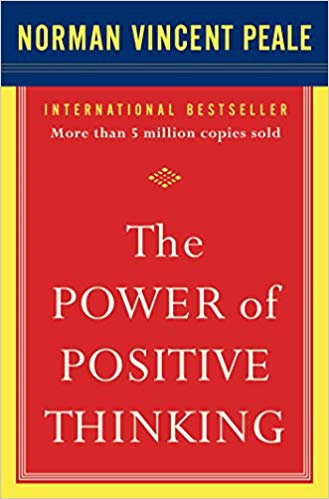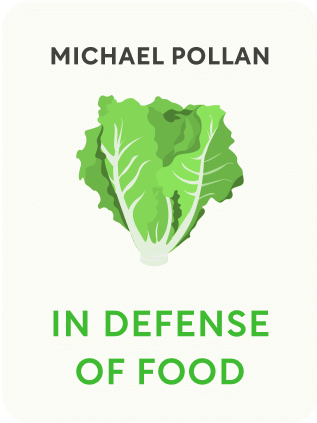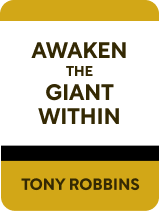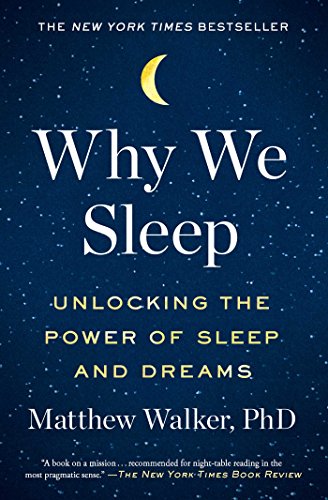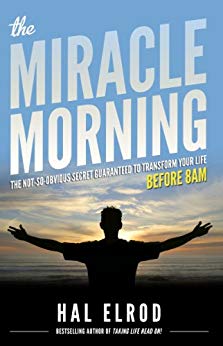

This article gives you a glimpse of what you can learn with Shortform. Shortform has the world’s best guides to 1000+ nonfiction books, plus other resources to help you accelerate your learning.
Want to learn faster and get smarter? Sign up for a free trial here .
Are you disappointed with your physical health? Do you want to live a happier and healthier lifestyle?
Practicing diet and exercise is typical advice for taking care of your health, but it’s so much more than that. Improving physical wellness also means getting enough sleep, properly handling stress, and keeping a positive attitude to motivate you on your journey.
Keep reading to learn how to improve physical health with expert advice.
1. Keep a Positive Mindset
Staying physically healthy is easier said than done, and you might feel like you want to give up. However, keeping a positive mindset can help you succeed in your health goals.
In The Power of Positive Thinking, Norman Vincent Peale says positive thoughts create positive outcomes; negative thoughts lead to negative outcomes. Thoughts can contribute to illness or health. If you’re unhappy with your current circumstances, you can remake your life by getting rid of your old, negative thoughts and filling your mind with new thoughts that reflect positivity.
Your thoughts about your physical health can drive you to failure and unhappiness, but you can also think your way into a healthy lifestyle that you’re satisfied with.
Believe and Succeed
When you start thinking differently about your physical health journey, the conditions around you will change. To do this, form a positive mental picture of how things should be—don’t just accept the way things are.
Hold that mental picture and believe it deeply—think about it often and do what you can to make it a reality. This process will help unleash creative thinking, helping you manifest this mental picture. Peale calls this ability to actualize your mental image one of the “greatest laws in the universe.” It is the key to reaching your end goal in your journey to living a healthy lifestyle.
Let Go of Anger
Thought patterns affect your physical state. If you are harboring ill will or resentment toward someone, this can manifest in a decrease in energy and efficiency. Mental pain can have a profound effect on your physical condition.
When you have an unhealthy emotional life marked by feelings of anger and resentment, your energy and vitality can sag and your physical health can diminish. But spiritual and emotional treatment can restore your vitality.
Letting go of any sort of resentment or anger you hold towards yourself or anyone else can be freeing for your physical health.
Chronic resentment can manifest in chronic aches and pains. For example, one woman kept breaking out with bouts of painful eczema. Her psychiatrist realized that something in her personal life was “eating at her,” and it turned out to be a family problem with her brother. When she was able to let go of resentment and hostility, her eczema vanished.
Emotional disturbances have been linked to the common cold. The idea is that blood circulation in the lining of the nose as well as glandular secretions are affected by emotions, leaving the area more vulnerable to cold viruses and germs. For example, one young woman was treated repeatedly for cold symptoms. Each time, her doctor realized it was related to a fight she had with someone in her life. The symptoms stopped when she was able to curb her anger and live more calmly.
The Power of Positive Thinking
by Norman Vincent Peale
40 min reading time
27k reads
audio version available
2. Adopt a Healthy Attitude Toward Food
In Defense of Food by Michael Pollan assures readers that food is more than nutrients and diet is more than certain foods, so it stands to reason that food culture is more than just diet. The sociology of food is a major component of eating and health. It involves habits, customs, manners, and the way we eat. Following traditional dietary patterns is just one step toward improving physical health.
When scientists ponder the French paradox, they only notice a diet of rich foods and wine and healthier eaters. What they don’t consider is the relationship those eaters have with the food and culture surrounding how they eat. If they did, they’d see that the French don’t snack and eat most meals in social environments. Their portions are small, and they eat at a slower pace. They eat fewer calories and enjoy the experience of eating.
Psychologists refer to something called “unit bias,” which means people tend to believe whatever portion they’re served is the right amount to eat. This is why portion size matters. Plus, when you eat smaller portions more slowly, you allow the food to be savored rather than devoured, leaving you wanting more. People struggling with bad eating habits could learn a lot from the French and other cultures regarding how to eat, and the following rules can serve as a guide.
Rule #1: Spend More Money on Food
To benefit your health and the health of the food chain, spend more money on food so you are buying better food both in nutritional value and quality. The French seem to accept the trade-off between the quality of food/eating experience and the cost of eating. But we are geared toward quantity and cheap, accessible food.
More expensive food is often so because it has required more care and energy to produce, rather than being mass-produced in factories, stockyards, or single-crop farms. These foods are better for you because of a lack of toxins or improved nutritional quality. Also, you’re more likely to eat less food when it costs more.
The lure of high-calorie products is their cheap price and convenience. This food is easy to eat and requires little effort to prepare or clean-up thanks to the invention of the microwave. These factors cause people to eat more. If we had to make our own junk food, such as baking our own hostess cakes or frying our own potato chips, we would eat less. You’ll eat less food if it is more expensive and requires more effort to prepare.
You are more likely to savor food more when you spend more on food and eat less. Eating healthier foods is a better food experience, and you’ll be satisfied with the smaller portion more than if you eat until you’re stuffed.
Rule #2: Meals Over Snacks
If you eat only three meals a day—breakfast, lunch, and dinner—and eat them with other people, you can reduce your caloric intake and promote a positive food culture. Americans tend to eat more snacks than meals, especially meals with other people. In fact, researchers have ceased studies that strictly focus on the big three meals. They now include a fourth “meal occasion,” that of all-day continual snacking and drinking of processed beverages.
Why is this a big deal? Those of a certain age will remember the culture of family meals and the benefits gained.
- People socialized around a table, sharing knowledge and intimacy.
- Parents modeled positive eating habits, such as eating healthy portions or not wasting food.
- Children learned manners and how to converse socially.
Family members now tend to forage for their own meals before sporadically making their way to the communal table, if they do at all. As soon as they’re finished eating, they leave the table. The food industry has conducted studies to observe the habits of families during meals, and seeing this new trend, they now market what they call “home meal replacements” to families. Each member can eat what they desire, whether low-carb, low-fat, low-cholesterol, or high-calorie. Portion sizes are dictated by whatever company packaged these ready-to-serve meals.
Social graces and culture have very little to do with the way families eat these days. Snacking now occurs in places that were once food-free environments. For instance, workplaces have well-stocked kitchens, and a box of pastries or bagels can often be found in work meetings. Times between meals are filled with foods packaged specifically for snacking.
Our snacking culture is so big, cars were redesigned to support it. Cup holders are large enough to fit a bottle of soda or Big Gulp. Glove compartments are refrigerated. And snack portions continue to grow. These snacks are rarely fruit slices or vegetable sticks. They are flavored, processed refined carbs, hydrogenated oils, salt, and sweeteners. This culture is so ingrained, changing it must be intentional. The following considerations can help improve physical health by not snacking as often:
1. Eat only at a table.
- A desk or bed or car seat is not a table. To curb your snacking, eat only when you are seated at a proper table.
2. Don’t buy food from gas stations or convenience stores.
- The corn industry’s best client is the gas station. They provide ethanol for your car and high-fructose corn syrup for you. In fact, people spend more money at gas stations on snacks and sodas than on gas. And gas station food is never high-quality and rarely nutritious.
3. Eat with others when possible.
- Communal eating helps curb overeating, likely because there’s an active audience to judge your consumption. You are also more likely to be careless in food choices and mindless about portioning when you eat alone. Food marketers know this and spend millions to make it possible for you to eat quickly by yourself. Plus, when you eat alone, you aren’t supporting a positive or social food culture.
Rule #3: Listen to Your Body
When external cues drive your eating habits, you’re likely to eat more than you need. When you allow other senses to guide what and how you eat, you’re likely to eat less. Other senses can lead to the following questions:
- Is this food as pleasing to the nose as it is to the eye?
- Does the food still taste good, or am I just eating to finish?
- Am I still hungry or simply still eating?
Science suggests that it takes 20 minutes for the stomach to signal the brain when full, but Americans tend to eat meals at a faster rate. You can be finished gorging before your body has time to react. When you eat slowly, you allow the body to feel satisfied and act accordingly. This is likely what makes the French paradox so compelling.
Rule #4: Don’t Rush Food
You gain more respect for the overall health of the food chain and promote food culture when healthy food is prepared and enjoyed intentionally. This belief is what the Slow Food Movement (Slow Food) was founded on. The movement was developed in Italy as a response to the hostile takeover of the Western diet in Rome when fast food chains were introduced in the 1980s. The movement seeks to reclaim and introduce the traditional culture of eating healthier foods consciously grown, prepared, and eaten communally.
Quality is the priority of Slow Food, for the belief is that a focus on quality will awaken an appreciation for sensory pleasures and bridge the expanding gap between eaters and food producers. The suggestion is that reestablishing an appreciation for food is the proverbial straw needed to break the back of fast-paced, individually driven societies, like ours.
Slow Food is a hard sell in America because it would require a shift in national culture along with food culture. We value success and hard work over everything else, including time off and community bonding. Fast food fits this frenzied, distracted way of life. We don’t want to slow down to think about what to eat, let alone what is in what we’re eating, which is precisely what food manufacturers are counting on.
Take the fast-food hamburger. This hamburger is engineered with flavorings to make it more succulent. It is made to be devoured, thereby reducing the amount of time you have to think about where it comes from. You likely wouldn’t get past the first bite if you considered the conditions of the stockyards, slaughterhouses, or thousands of workers toiling at precarious factory jobs for minimum wage.
In contrast, a grass-fed burger made at home is more enjoyable to eat. First, it’s healthier for you. Second, with the knowledge of where the beef comes from, you can imagine pastured cows grazing and skilled workers humanely producing the meat. The food feels better intellectually and tastes better, giving you a greater sense of appreciation for what you’re eating.
Appreciation for food is found when eating becomes intentional, rather than habitual. Even something as simple as growing a few herbs at home can help you feel more connected to your food, which leads to the next rule.
Rule #5: Grow and Prepare Your Food
When you feel ownership of your eating, you strengthen your relationship with food and help break your dependence on the industry. You take responsibility for your physical health back from the industry and scientists and become the chef again in your kitchen. Your perspective is driven by nature, not nutritionism, and you help create stronger bonds with your food, community, and the earth.
3. Exercise Strategically
Whether it be just taking a walk around the block or going to the gym, physical activity will help improve your health, according to Tony Robbins in his book Awaken the Giant Within.
You can balance both health and fitness by strategically incorporating both aerobic and anaerobic exercise into your life, which trains your metabolism to burn fat, increases your energy levels, and improves your overall health. First, you need to understand the difference between aerobic and anaerobic exercise:
- Aerobic exercise is done at a moderate intensity—at which you can still talk—and is sustained for a longer period of time. This form of exercise builds your endurance and burns fat.
- Anaerobic exercise is done in short, intense bursts, which cause you to breathe so hard that it’s difficult to talk. This form of exercise builds your power and burns glycogen, a form of sugar.
By adjusting your pace and level of intensity, you can modify most exercises to make them either aerobic or anaerobic. However, if you jump into an intense anaerobic workout without proper training and warming up, your body must supply blood to your muscles so quickly that it’s forced to reroute it from your liver, kidneys, and other critical organs. This deprives the organs of oxygen, which can weaken and damage them.
Build an Aerobic Base
Fortunately, you can avoid the issue outlined above by building an aerobic base, which trains your body to burn fat as its primary fuel. To develop your aerobic system, start by doing only aerobic workouts for two to eight months. This will condition your metabolism, which:
- Promotes fat burning
- Boosts your energy
- Supports your immune system
- Minimizes your injuries
- Improves your endurance
If you already own or can buy a portable heart rate monitor, you can ensure that your heart rate doesn’t rise to anaerobic levels (greater than 180 minus your age). If you don’t have a monitor, gauge your intensity level on a scale of 0 to 10, with 0 being equivalent to sitting on the couch and 10 being so intense that you feel like your heart is about to explode. During an aerobic workout, try not to rise above a 7, ideally staying between 6 and 7.
Begin with three workouts like this each week:
- Gradually warm up for about 15 minutes. This gives the fatty acids stored in your body a chance to move into your bloodstream, where they can be used to fuel your workout (instead of your blood sugar). Additionally, this gives your body time to deliver blood to your muscles instead of quickly rerouting it from your organs. If you’re wearing a heart monitor, your heart rate should be about 50 percent of the maximum heart rate (your maximum heart rate is 220 minus your age).
- Exercise at an aerobic level for 20 to 45 minutes. If you’re wearing a heart rate monitor, your maximum aerobic level is 180 minus your age.
- Cool down for 12 to 15 minutes by walking or doing another easy movement. This helps blood circulate through your body to be cleansed and reoxygenated. If you skip your cool-down, your blood stays in the muscles you just worked out, which raises the toxicity in your bloodstream.
Incorporate Anaerobic Exercise
After building your endurance through an aerobic base, increase your power by adding anaerobic exercise. Anaerobic workouts increase your levels of human growth hormone (HGH), which:
- Stimulates the growth of tissues, bones, and organs
- Improves muscle tone
- Increases lean mass
- Improves flexibility
- Builds muscles
Your body produces the hormone consistently until you’re about 30, after which point your natural HGH levels drop. However, anaerobic exercise raises your HGH, and it’s never too late to start: Research shows that people in their 60s who hadn’t done any muscle-toning exercise in more than a decade increased their muscle mass and energy levels through this kind of explosive anaerobic exercise.
The best time to introduce anaerobic exercise will be when you reach a plateau in your aerobic training—most likely after two to four months—but the ideal timing will be different for everyone. Above all, listen to your body. When you’re ready, incorporate anaerobic workouts into your regimen by adding in weight training and increasing the pace of your aerobic workouts. Aim to add one to three anaerobic workouts a week.
4. Get Plenty of Sleep
Sleep deprivation disrupts the normal function of many physiological processes, likely contributing to chronic diseases. So it’s important to get the required amount of sleep humans need each night to improve physical health.
At a high level, sleep deprivation of even just one to two hours triggers the sympathetic nervous system (fight or flight response) and disrupts hormonal balances. This also implies that sleep is necessary for the normal maintenance of physiology.
In Why We Sleep, Matthew Walker provides a list of health conditions that are linked to sleep deprivation:
- Heart disease
- Diabetes
- Obesity and weight gain
- Reduced reproduction (by affecting hormones and attractiveness)
- Some cancers
- Aging
- Reduced athletic performance
- Death
How Much Sleep Is Enough?
So, how much sleep should you get to maintain good physical health? The National Sleep Foundation consulted a panel of 18 experts who reviewed hundreds of sleep studies to determine the appropriate sleep durations for each age group:
- Newborns (0-3 months)—14-17 hours
- Infants (4-11 months)—12-15 hours
- Toddlers (1-2 years)—11-14 hours
- Preschoolers (3-5 years)—10-13 hours
- School-aged children (6-13 years)—9-11 hours
- Teenagers (14-17 years)—8-10 hours
- Adults (18-64 years)—7-9 hours
- Older adults (65 years and above)—7-8 hours
Other organizations, such as the American Academy of Sleep Medicine and the Sleep Research Society, have made similar recommendations.
Babies, young children, and teens need more sleep as they’re still growing and developing. To determine how much sleep you need, the Sleep Foundation recommends considering your overall health, daily activities, and sleep patterns.
5. Practice Relaxation Techniques to Relieve Stress
According to The Miracle Morning by Hal Elrod, Periods of relaxation are beneficial because stress can negatively impact your physical health and cause several health problems such as heart disease, stroke, high blood pressure, etc.
To reduce your stress and begin each day with calm, clarity, and focus, do the opposite of what most people do—start with a period of silence.
For most people, early mornings are either: 1) hectic—you have a million things on your mind, or 2) slow—you feel lethargic, lazy, and have trouble getting started. Neither is a productive way to start your day. In contrast, starting with purposeful silence will allow you to focus on what’s most important in your life.
There are at least five ways to practice silence to improve physical health: meditation, prayer, reflection, deep breathing, and gratitude. You can start your morning with just one of them or combine them. Many people choose meditation.
How to Meditate
Meditation is the practice of quieting and focusing your mind, but the stress it relieves can prevent numerous diseases and illnesses that can harm your physical health.
There are countless books and videos you can consult for step-by-step instructions. Meditation requires little time, yet offers numerous health benefits for just minutes a day—for instance, improving metabolism, blood pressure, and brain function; reducing stress and pain; and improving sleep and concentration. Many celebrities and high achievers—for instance, Oprah, Jerry Seinfeld, and Sting—attest to the benefits.
In general, there are two types of meditation: individual and guided. Individual meditation is done on your own, while the guided version is done by following audio instructions to focus your mind. If you need help getting started, here’s a simple process:
1) Find a quiet, comfortable place to sit: a couch, chair, pillow, or the floor.
2) Sit upright with your legs crossed; close your eyes or look down at the floor.
3) Quiet your mind by letting go of intrusive thoughts, worries, and anything preoccupying you. Focus on “just being” rather than on thinking or doing.
4) Focus on breathing: take slow, deep breaths, inhaling through your nose and exhaling through your mouth. Breathe from your belly rather than your chest. Inhale and exhale for a count of three. When thoughts cross your mind, acknowledge them and let them go. Keep focusing on your breathing.
5) Be present in the moment. If you have trouble quieting your thoughts, focus on a word or phrase, repeating it to yourself as you inhale and exhale. (For example, “I breathe in peace… I breathe out love.”)
Think of your daily meditation as a mini-retreat from your problems. Although your problems won’t go away, you’ll be able to handle them more calmly and effectively.
At first, sitting in silence may be difficult, but you can master it with practice. Start with about five minutes. It won’t be long before your physical health begins to experience the benefits.
In Sum
It’s very important to take care of your body because it’s the only one you have. At the same time, it’s crucial to also love and accept your body, no matter how it looks. But, if you feel like your physical health is suffering and you would benefit from improving it, then it’s advised to follow the steps above for success.
Do you have any tips to improve physical health? If so, leave them in the comments below!

Want to fast-track your learning? With Shortform, you’ll gain insights you won't find anywhere else .
Here's what you’ll get when you sign up for Shortform :
- Complicated ideas explained in simple and concise ways
- Smart analysis that connects what you’re reading to other key concepts
- Writing with zero fluff because we know how important your time is

